

Soaking in the Art at Sento
|
Sento are traditional Japanese bathhouses where customers pay to enter and bathe in a communal bath. With a bathing culture that dates back over a thousand years, it is no wonder that public baths and bathhouses have become cornerstones in Japanese communities, serving as an accessible bathing facility and a place for people in the community to connect with each other.
Although onsen (or ‘hot springs’ as they are known in English) can also be sento, there is a slight fundamental difference. To qualify as an onsen, the water has to be at least 25ºC at the source, and must meet at least one of 19 criteria relating to the mineral content of the water. The waters of these natural mineral-rich springs are said to have various healing properties depending on the type of minerals found in the water, and Japanese people often visit onsen to relax. On the other hand, sento serve to fulfill a practical daily purpose: hygiene! Public bathhouses really rose to nationwide popularity during the post-war period. As cities grew and became more densely packed, houses became smaller and not all homes could accommodate a bathtub, and thus public bathhouses popped up all over cities throughout the country to serve the needs of these city folks. Once ubiquitous throughout Japan, the number of public bathhouses has steadily decreased over the years as private baths at home become more commonplace. One feature that sento have come to become known for is murals. Customers can forget about fast-paced city life while soaking in hot water, surrounded by depictions of calm countryside landscapes on murals. Tranquil streams, and swaying tree branches are common sights but one subject in particular features prominently in many murals all over the country, and that is the famous peak of Mount Fuji. |
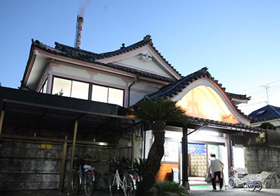 © Web Japan 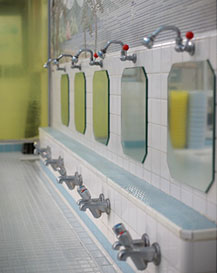 © Web Japan 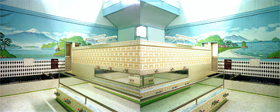 ©『MASAMIYOKUJYO SAITAMA 1995』 |
|
But how did Mount Fuji come to be the subject of choice for so many sento? The story, as posited by the Tokyo Sento Association, dates back to 1884. A mural painter hailing from Shizuoka Prefecture – one of the prefectures that the famous volcano straddles – drew it on the walls of Kikai-yu, a bathhouse in Tokyo’s Chiyoda district. This was believed to be the first mural of Mount Fuji to be painted on the walls of a bathhouse. Word began spreading that the depiction of Mount Fuji brought in good fortune for the bathhouse, and soon, other bathhouses followed suit, ordering murals of Mount Fuji on their walls as well.
The walls of bathhouses also played host to advertisements. Local businesses looking to advertise their goods to the community would pay to have advertisements below the massive murals; their payments would thereby cover the cost of hiring the mural artists! With the dwindling number of traditional bathhouses, and the rise of new media as a more effective means of advertisement, this practice has died out, leaving the onus on sento owners themselves to bear the cost of the mural. Hand-painted murals have undoubtedly become a dying art, and the number of bathhouse mural painting specialists has also decreased significantly. There are currently only three such specialists active in the country: masters Kiyoto Maruyama and Morio Nakajima are in their 80s and 70s respectively, and Mizuki Tanaka who, in her 30s, is the youngest in the trio. The older masters recall having to work 6 days a week, but these days, each mural artist only paints 2-3 murals a month. Becoming a bathhouse mural specialist is no easy feat. Apprentices are usually tasked with painting blue skies in the background, and it usually takes four to five years before they are allowed to take charge of an entire mural by themselves. Mural artists also have to finish their murals in a day; taking any longer would require a bathhouse to close, thereby losing them precious business days. Standing precariously on wooden planks set between ladders, they have to work fast to mix bright and lively hues to create a view of Mount Fuji that bathers would be happy to see. Not many traditional public bathhouses remain in Japan, with an estimated 4,000 of such places nationwide now. Some sento have innovated themselves to attract customers by becoming “super sento.” Super sento have additional features such as food stalls and parking facilities, allowing for customers to spend several hours comfortably there. Other traditional bathhouses have also decided to incorporate modern and trendy design elements to become “designer sento.” Here in Singapore, there is little opportunity for us to experience an authentic sento but is it possible to recreate the atmosphere of one with custom-made mural posters. These one-of-a-kind pieces start at around 42,000 yen (which is around SGD$555), with prices increasing according to the size of the poster and its requirements. Smaller mass-produced prints are also available; the Tokyo Sento Association, amongst many other associations, offers a variety of different designs on their online shop for purchase. |
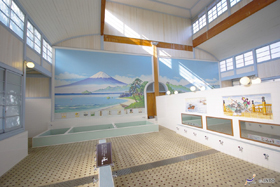 © JNTO 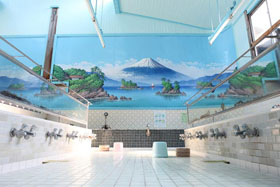 © Web Japan 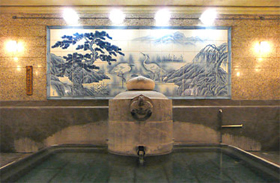 © Web Japan 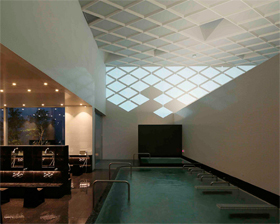 © Hisamatsuyu 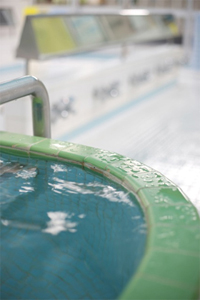 © Web Japan |
Resources
|
Crohin, S. (2015, June 3). The art of sento. Time Out. Retrieved from https://www.timeout.com/tokyo/art/the-art-of-sento |
|
Japan Creative Centre 4 Nassim Road, Singapore 258372 +65 6737 0434 / jcc@sn.mofa.go.jp https://www.sg.emb-japan.go.jp/JCC/ Nearest parking at Orchard Hotel & Delphi Orchard |
 |